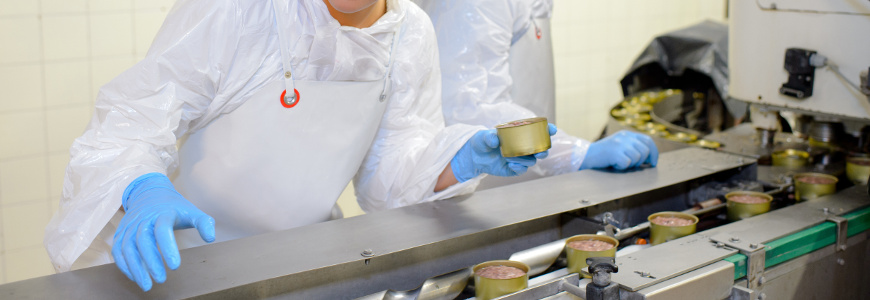
Each day, our technicians assess many different makes and models of thermometer which have all been sent for repair. They have used their experience to identify the three main forms of damage for you. Let's go over how they can be avoided.
Moisture ingress
Moisture is all around us. Even if you do not have a wet environment, do you have steam and/or condensation in your factory? This counts as moisture and poses an equal, if not greater, threat to your thermometers.
Water is the enemy of all electronics, including the electronics in your thermometer. When moisture gets into your probe thermometers it causes corrosion to the PCB (printed circuit board). This causes the accuracy to drift. At first this may be negligible, but unfortunately it is a process that, once started, cannot be stopped. This means the accuracy of your thermometer will only drift further over time.
Many thermometer specifications state IP67. Yet you also need to check that besides the thermometer housing being IP67 rated, the probe connector must also be IP67 rated. If it isn't you have a waterproof thermometer housing which still has an access point for moisture!
Unfortunately, the damage done to thermometers via moisture ingress is unrepairable. So ask yourself, how exposed is my thermometer going to be to moisture and do I have adequate protection?
Probe cable damage
Probe cables are considered a necessary part of a probe thermometer. Thermometers without cables are available (stem thermometers), but are rarely practical in production areas. There are several ways probe cables can be damaged in ways not visible to the untrained eye. The most frequent are:
- Snagging. Snagging most commonly occurs when a) you put your thermometer down and drop the probe, or b) accidentally drop the thermometer and catch the probe as it falls. This causes the wire to snatch putting tension on the electronic wires inside the cable. If repeated too many many times the electronic wire within the probe cable will snap.
- Using as a prop. Thermometer probes are not designed for jamming doors, hatches and windows open or shut! Like snagging, this causes the electronic wires inside the cable to sever over time. This renders the probe unusable.
- Fiddling. Fiddling with thermometers while not in use is probably the biggest cause of damage to thermometer probes. Many operatives inadvertently 'play' with the probe cable by twisting or swinging it around. This twists the electronic wire to snapping point, severing the electrical connection.
Unfortunately, all three types of cable damage are either unrepairable or not cost effective to repair. Isn't it ironic none of these occur when the thermometer is in use! The simple solution is to make sure your thermometers have a definite home and out of harms way when not in use.
Impact damage
Many operatives overlook the fact that thermometers are electrical devices. They need looking after the same way as other electrical equipment, such as smartphones.
When a thermometer is subjected to impact damage (eg dropped from waist height onto a solid floor) it is likely to 'shock' the electronics. This is also likely to cause secondary effects, such as moisture ingress (via damage to the thermometer housing).
Much of the impact damage observed by our technicians occurs when the thermometer is not in use. The first step to minimising this is to ensure adequate storage when not in use.
Protective covers, such as the silicone boot, also help reduce impact damage. By cushioning any impact, the risk of damage is decreased.
In summary, you can reduce the repair costs of your thermometers and increase their lifespan in three simple ways:
- avoid moisture ingress
- minimise the risk of cable damage
- eliminate the risk of impact damage.



